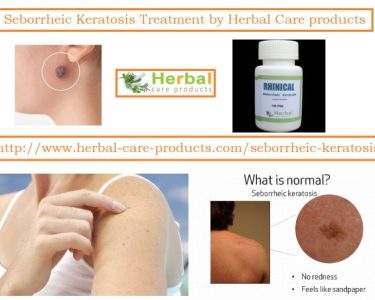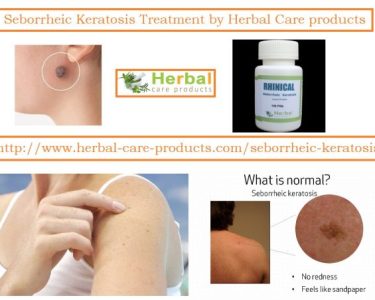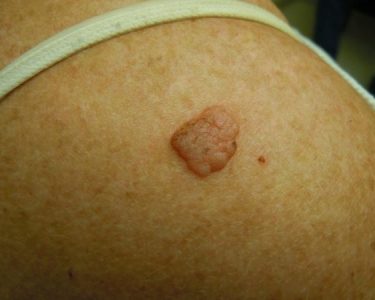Seborrheic Keratosis
Senile moles are another name for seborrheic keratosis. This is a condition that primarily affects the elderly. It’s a type of skin growth that looks like moles, warts, or skin cancer. Seborrheic keratosis can manifest itself in any portion of the body. These growths are waxy in appearance. These lesions can also appear scaly or raised. The cause of seborrheic keratosis is unknown, although as people age, their chances of developing it rise. Seborrheic keratosis can also be inherited. Seborrheic keratosis is characterised by tiny, rough bumps that thicken over time.
From white to black, the colour can be used. They are usually tan or brown in colour. These bumps can range in size from a quarter of an inch to a half-dollar. The neck, face, scalp, stomach, back, and chest can all acquire these growths. They can occur alone in rare situations, but they almost always appear in groups. Unless aggravated by external stimuli, seborrheic keratosis is painless.
It is possible that the growths will itch in some circumstances. These growths can resemble a malignant mole in appearance in some situations, but they are not cause for concern. If seborrheic keratosis is causing you discomfort and shame, you can try some of the home remedies listed below. If you have seborrheic keratosis, you should consult your doctor before trying any of the home therapies listed below.
Home Remedies for Seborrheic Keratosis
Cool Compress
Applying a cool compress straight to your skin can help to reduce the growth of irritated seborrheic keratosis. Using a washcloth, run cool water over it. Then drain out the excess water and pat your skin dry with this washcloth. If your seborrheic keratosis is itching or causing you discomfort, you should repeat this natural treatment.
Vitamin D
There have been some studies that demonstrate a link between skin growth and a deficiency in particular nutrients or vitamins in the body. Vitamin D levels should be increased because it can help your skin’s immunity. You can also take Vitamin D pills, but you should consult your doctor for the proper amount.
Hydrogen Peroxide
Hydrogen peroxide can be used as a Natural Treatment for Seborrheic Keratosis. The seborrheic keratosis should be treated with hydrogen peroxide at a dosage of 23–80 percent. The seborrheic keratosis will become pink and create scabs when you apply this home remedy on them.
Do Not Touch
You should resist the impulse to pick, scratch, or itch seborrheic keratosis-affected skin because doing so increases your risk of bleeding, inflammation, and, in rare situations, infection.
Be Patient
If you have seborrheic keratosis, you should be patient with your treatment. Some incidences of seborrheic keratosis have resolved on their own without the need for therapy. If you wait long enough, your seborrheic keratosis may disappear completely.
Coconut oil
This home remedy can aid in the treatment of seborrheic keratosis. You should drink two to three tablespoons of coconut oil on a daily basis because it is one of the most effective ways to get rid of dangerous rancid fat and prevent it from accumulating in the body.
Avoid Certain Foods
Some foods should be avoided if you have an allergy. You should also minimise your consumption of inflammatory foods.
Fish oil
Fish oil can be used as a Natural Remedy for Seborrheic Keratosis. You can also take a krill oil supplement. Both home cures can help you get rid of dangerous rancid fat and keep it from accumulating in your body.
Cut off Blood Supply
Some people suffer from seborrheic keratosis on their scalp, and if this is you, you can utilise your hair as a natural cure. You can tie long strands of hair around the base of the growth to block off the blood supply in this way. As time passes, the seborrheic keratosis will begin to shrink, darken, and eventually fall off. This is a painful procedure, according to many people, but it is successful. This natural treatment has been seen to remove seborrheic keratosis in a period of several weeks to more than a month.
Tea Tree oil
In order to treat seborrheic keratosis, you should use this home treatment. It might be able to assist you in getting rid of this problem. You should continue to apply this home treatment for as least a week after the seborrheic keratosis has been removed from your skin to ensure that no issues arise.
Nectar and Water
This is one of the most effective Home Remedies for Seborrheic Keratosis. You can apply a mixture of honey and water to the affected areas. Allow three hours for it to sit there. You should wash the nectar off when this time has gone.
Aloe Vera
This home remedy can be used to treat seborrheic keratosis naturally. If you’re going to buy Aloe Vera gel from the store, make sure you get one that doesn’t include any chemicals. However, fresh Aloe Vera gel derived from Aloe Vera leaves is always preferable. This gel should be applied straight to your skin two times each day. After one or two weeks, you should notice a difference in your condition.
Serrapeptase
This is an enzyme that helps the body convert proteins into amino acids. This enzyme is derived from bacteria found in the guts of silkworms. This home remedy is popular because of its anti-inflammatory effects, and it can also be used to treat seborrheic keratosis. It promotes the disintegration of fibrous tissues and the leakage of fluids that produce seborrheic keratosis.
These tissues are broken down into amino acids, which the body then excretes as a waste product. Serrapeptase tablets should be taken on an empty stomach or at least two hours after a meal if possible. You should wait at least thirty minutes before eating anything after taking this home treatment. You should see your doctor about the proper dosage of serrapeptase to take throughout the day.
Avoid Irritants
Clothing and jewellery have been shown to aggravate seborrheic keratosis growths, causing irritation. If you have seborrheic keratosis, you should refrain from wearing jewellery until the growths disappear. Clothing made of natural fibres, such as cotton, should always be purchased because they are pleasant on the skin.
Olive il
This home medicine contains oleic acid, which can aid to reduce cell buildup. It also aids in reducing the thickness of the lesion. This natural remedy should be massaged into the affected area to assist the seborrheic keratosis separate itself. To see positive effects, you should repeat this natural therapy on a daily basis.
Castor oil
One of the greatest natural therapies for seborrheic keratosis is this home cure. Castor oil should be used to seborrheic keratosis twice a day. This home remedy is ideal for persons with sensitive skin who wish to get rid of seborrheic keratosis because it has soothing and therapeutic characteristics.
Apple Cider Vinegar
The raw and organic apple cider vinegar, which can be applied topically, is one of the greatest Home Remedies for Seborrheic Keratosis. You should dilute apple cider vinegar before using it if you have seborrheic keratosis on your face. To make the mixture, combine one part apple cider vinegar with three parts water. This Home Treatment for Seborrheic Keratosis should be used two to three times each day.
You should use a cotton ball to apply the apple cider vinegar to other places of your body where you have seborrheic keratosis. On healthy skin, you should use a skin protector, such as castor oil, and cover it with a bandage.
If you use this home cure at night, you should change the apple cider vinegar band aid and cotton ball every 12 hours. Apple cider vinegar can also be taken internally. Mix two teaspoons apple cider vinegar in a glass of warm filtered water for this purpose. In this mixture, you can also add a small bit of honey. This home treatment should be consumed two to three times each day, ten minutes before a meal.




